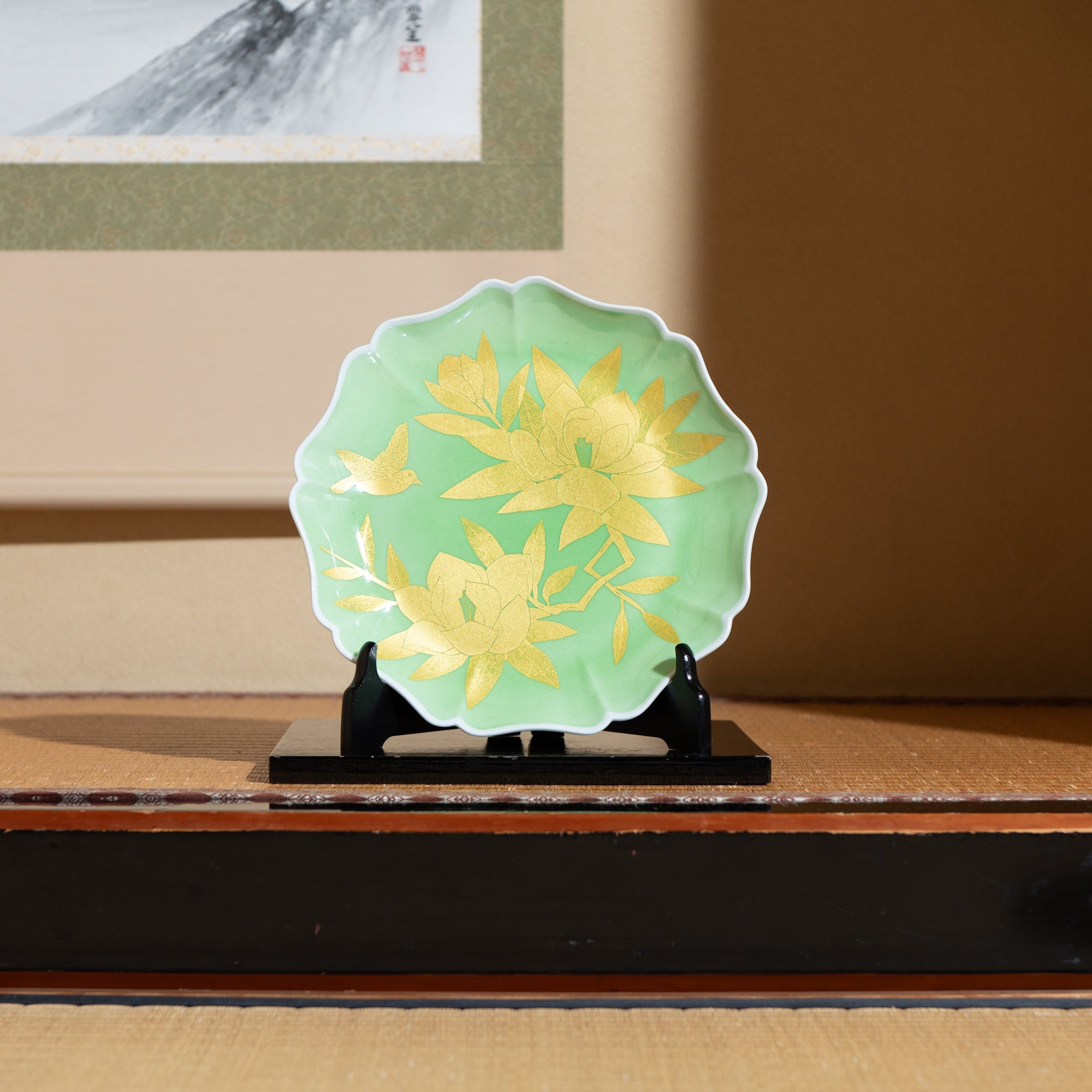
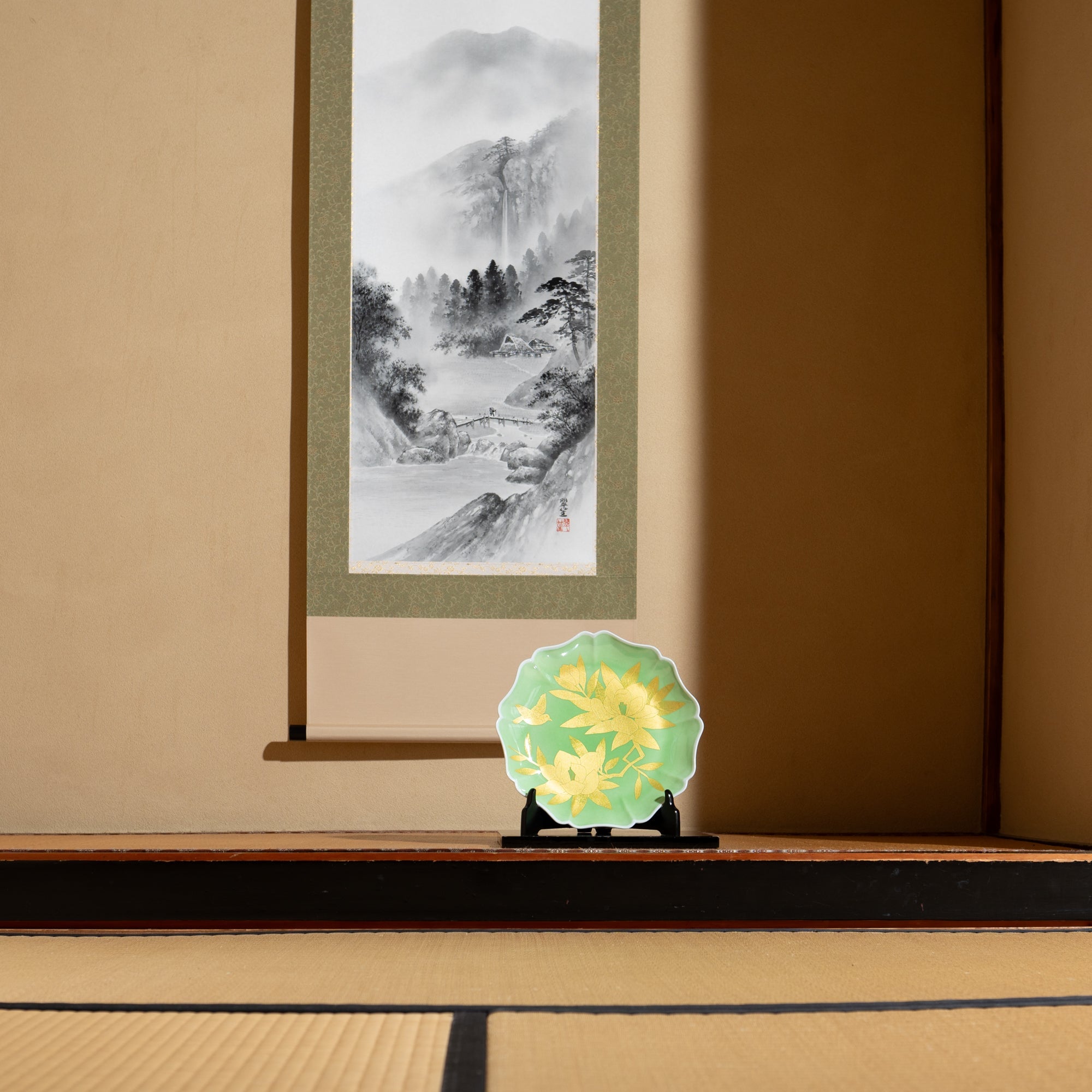
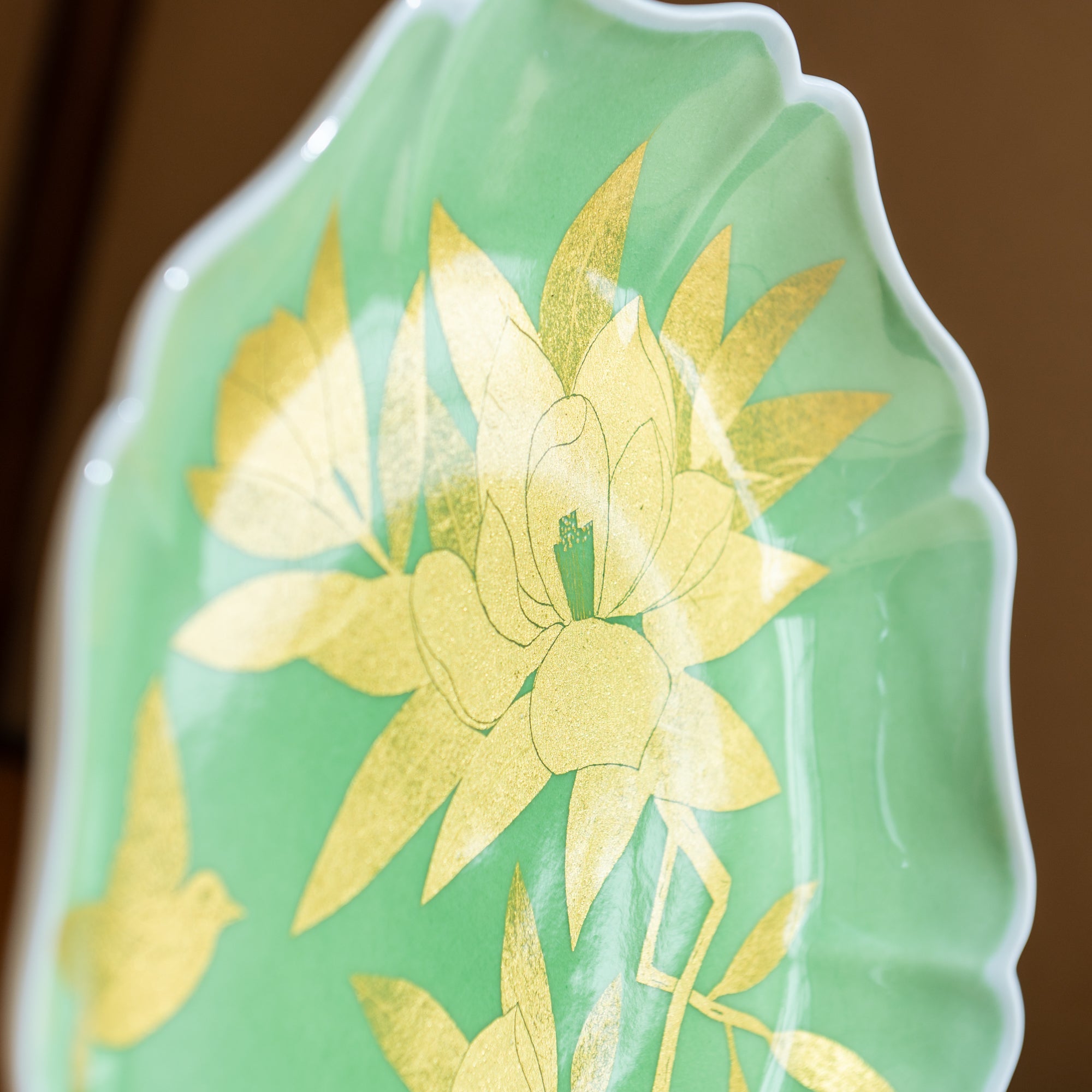
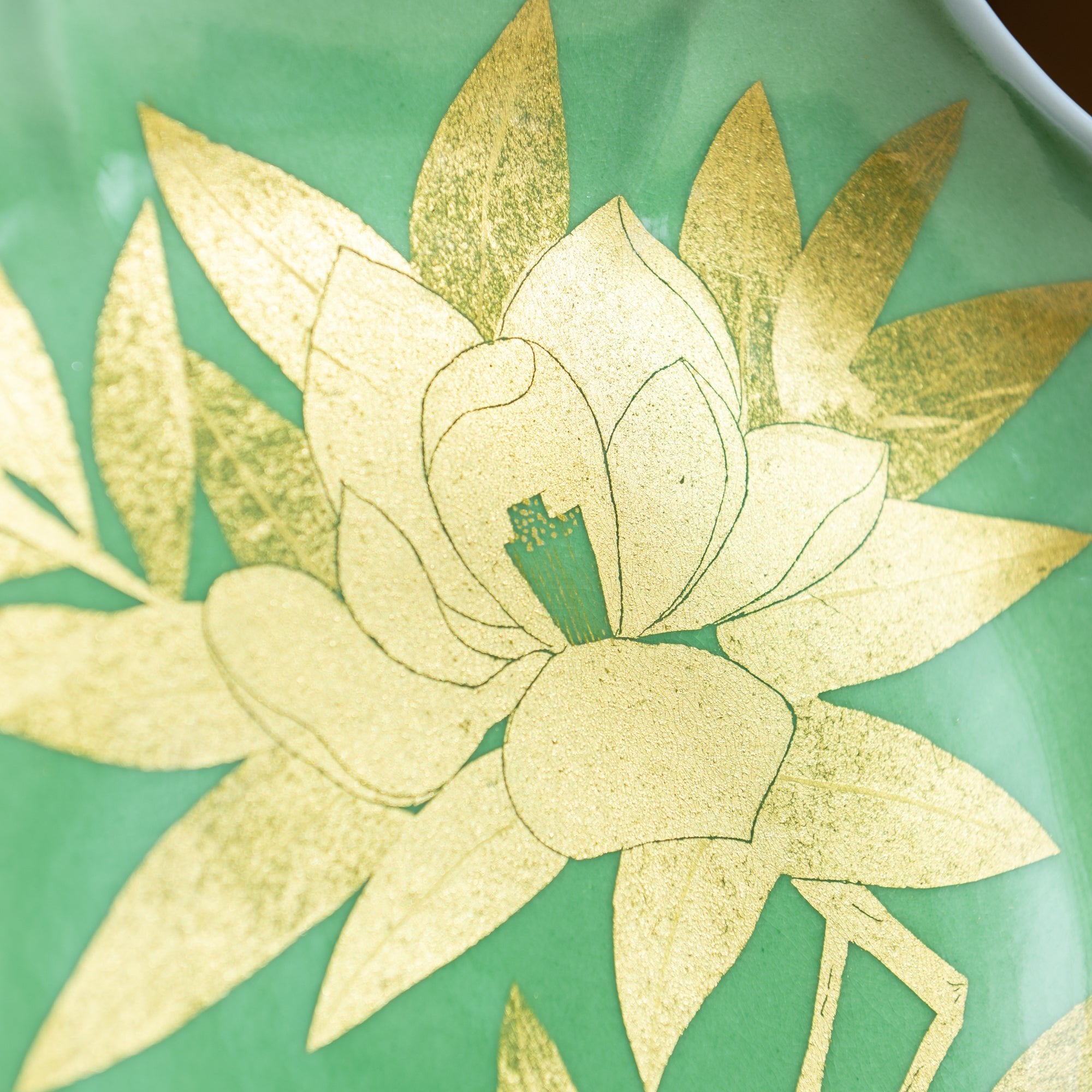
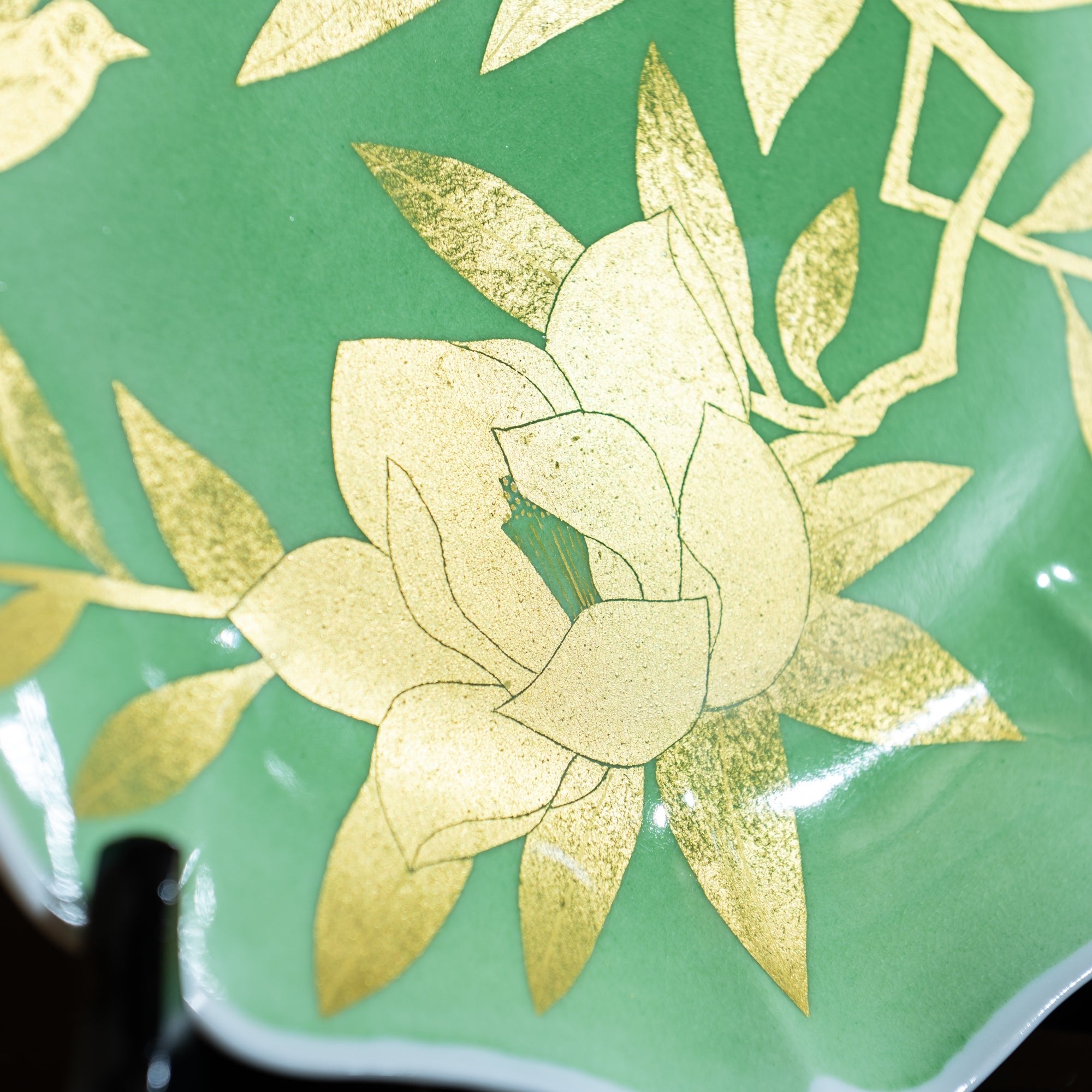
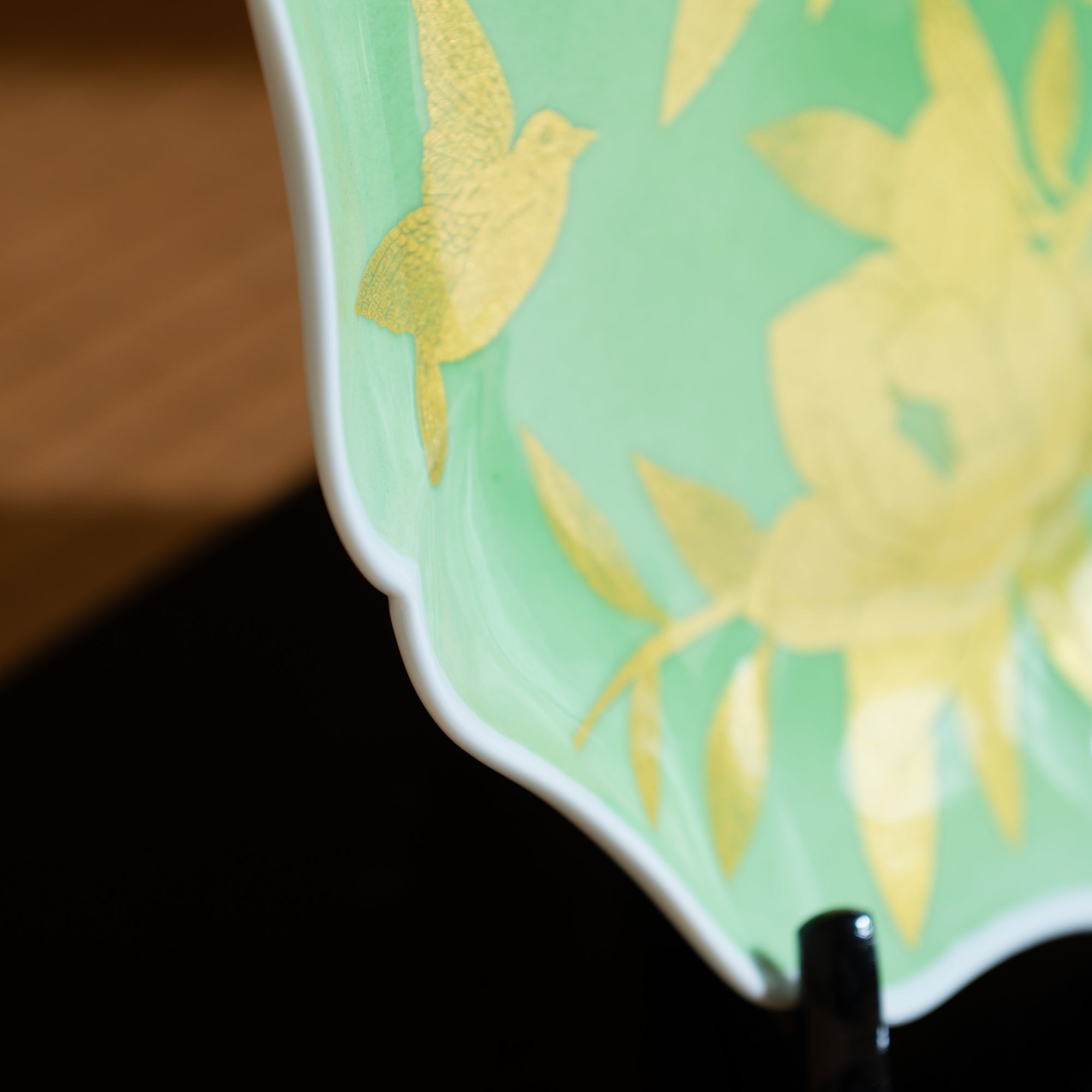
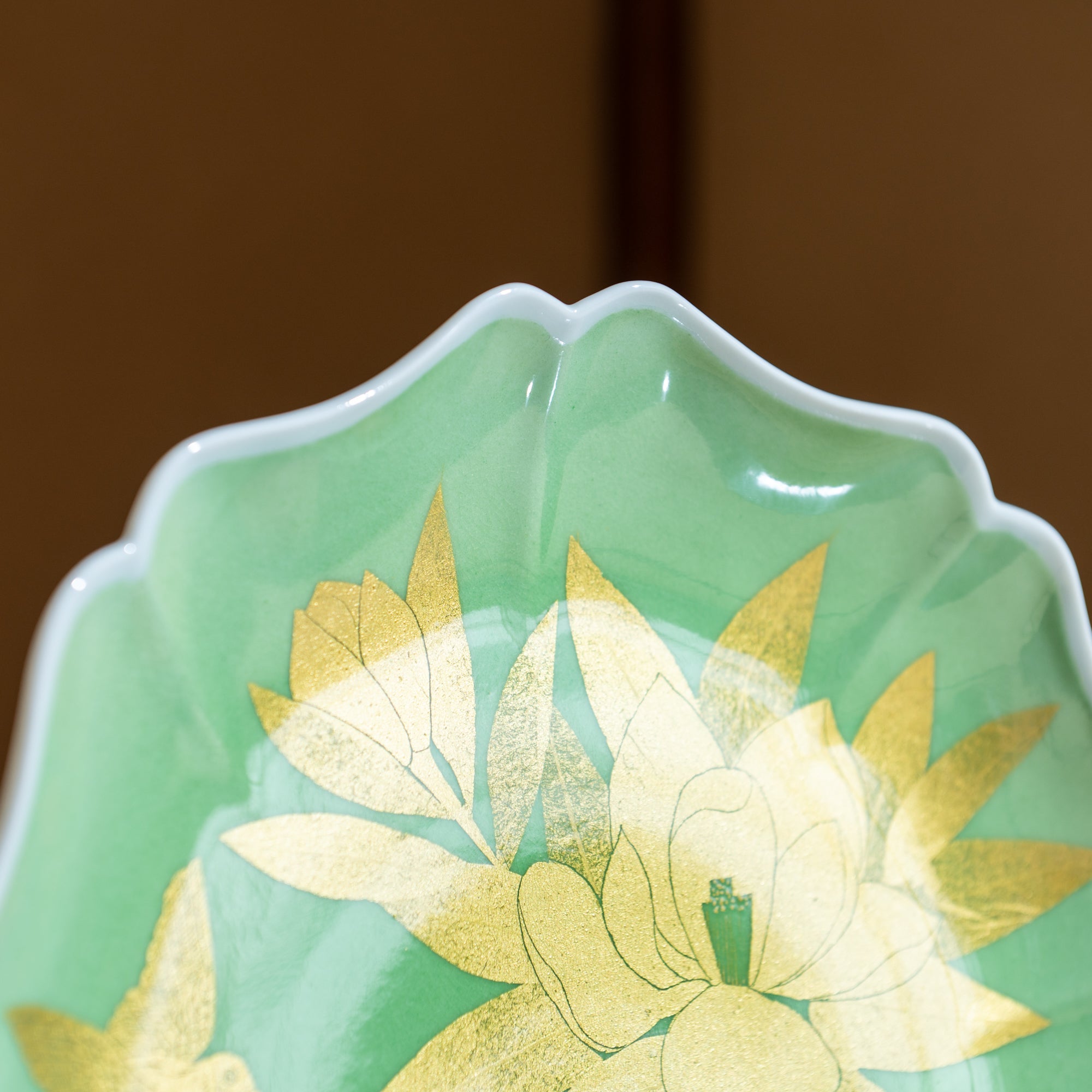
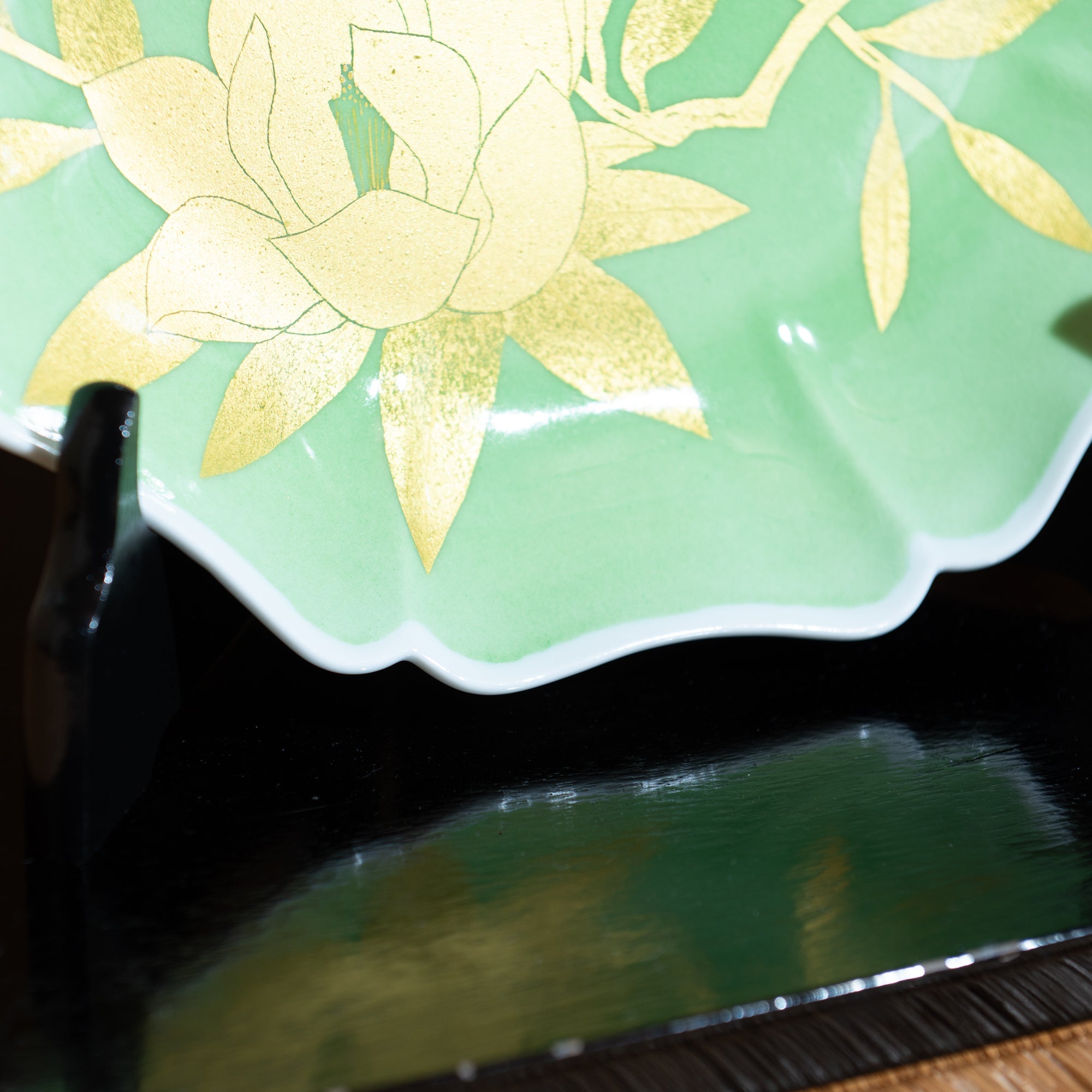
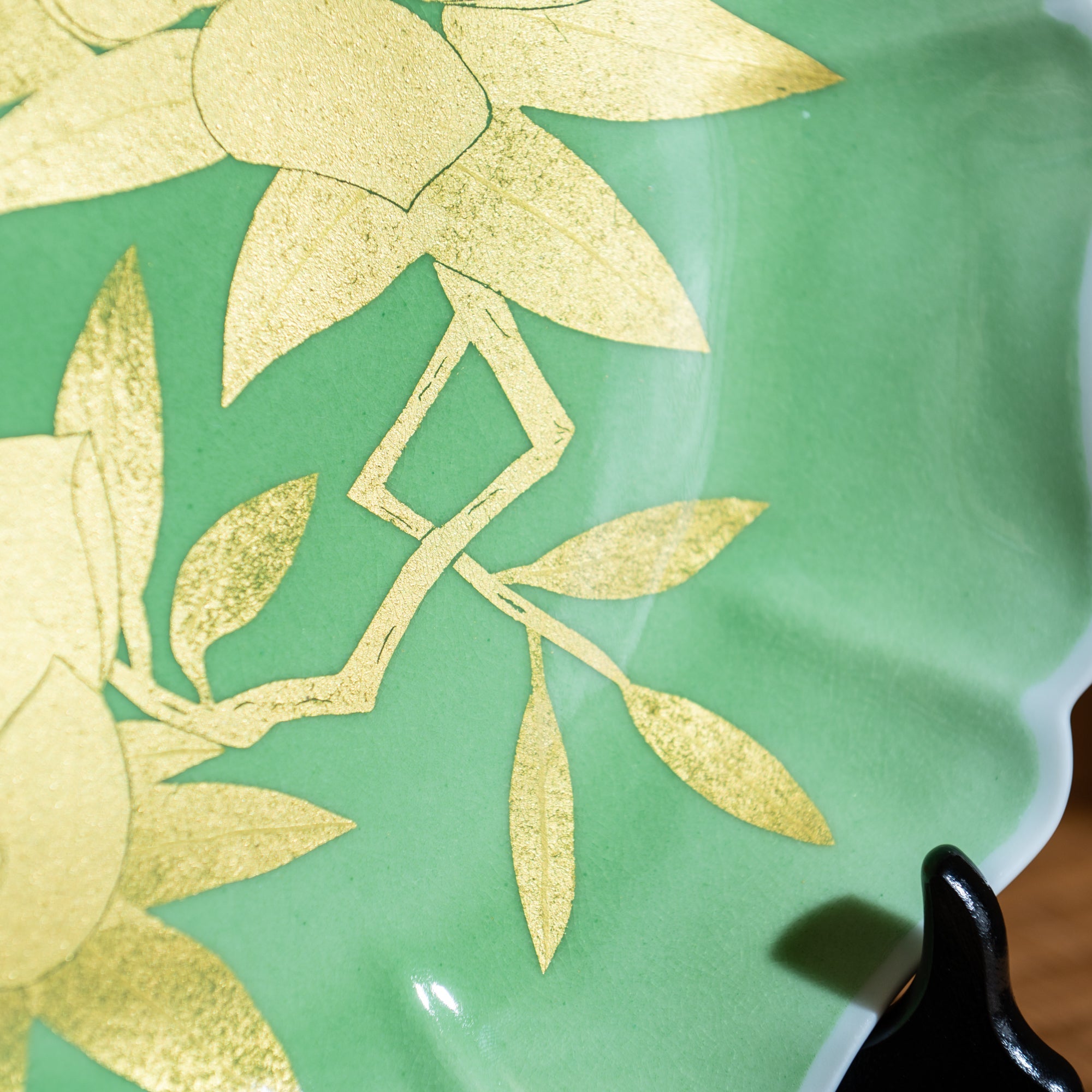
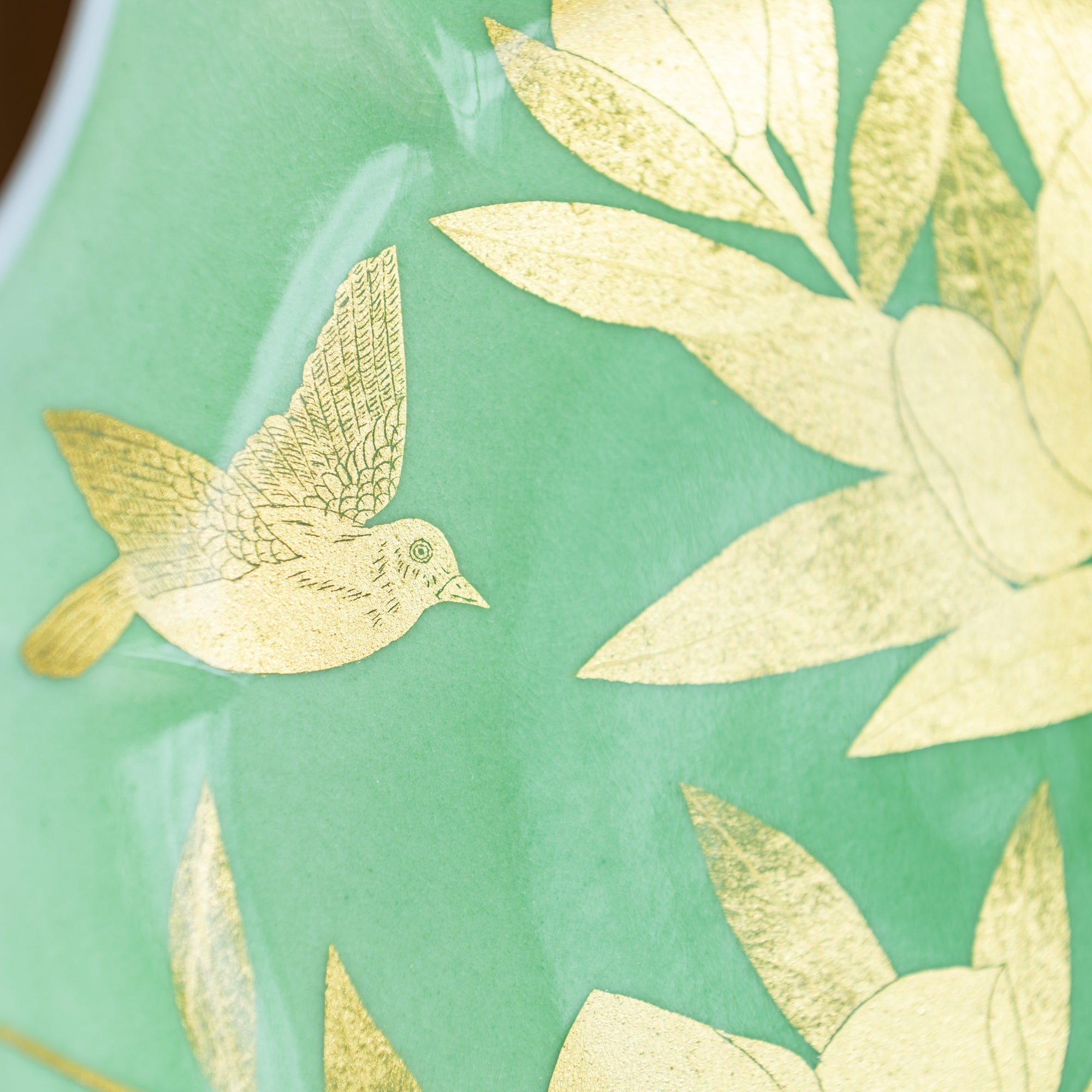
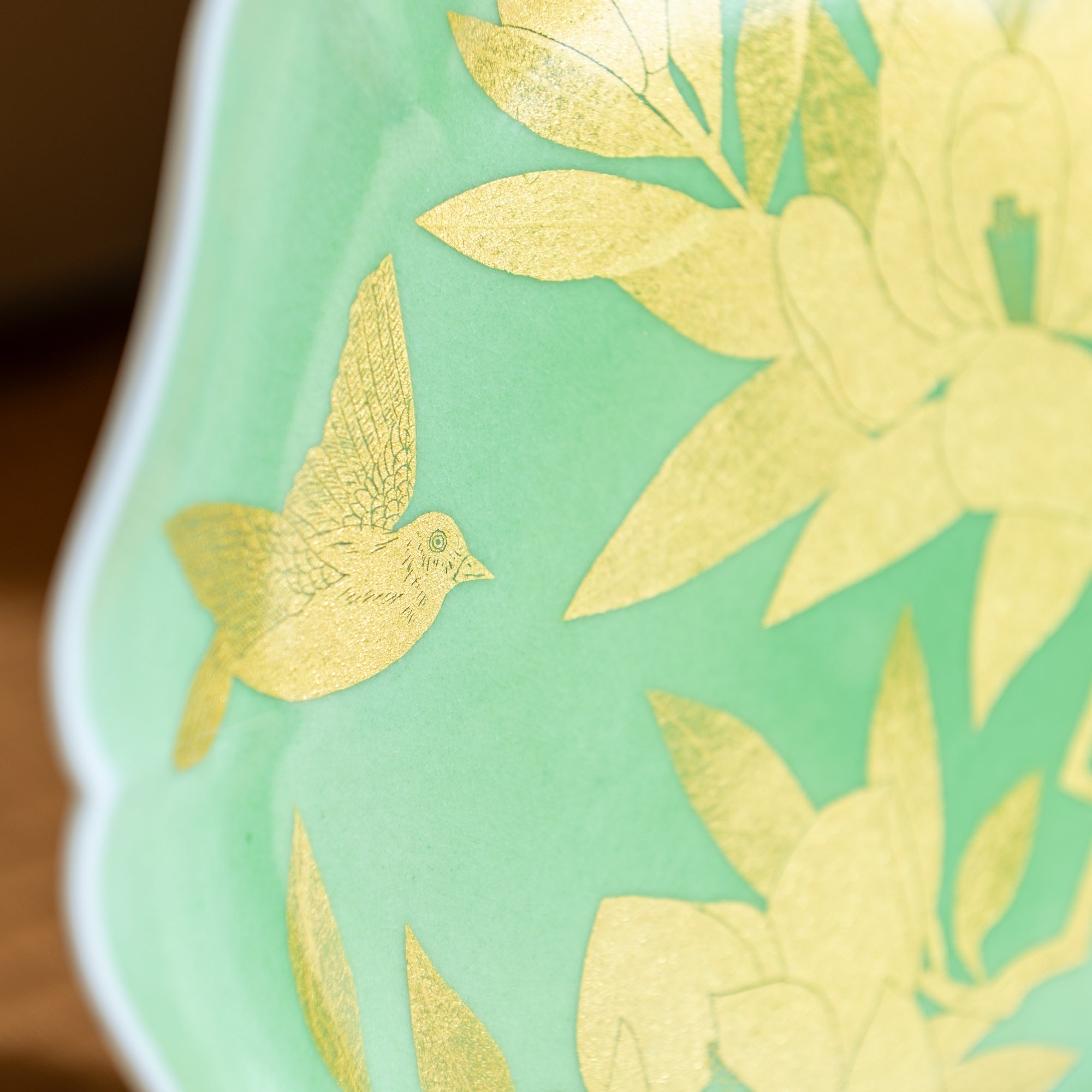

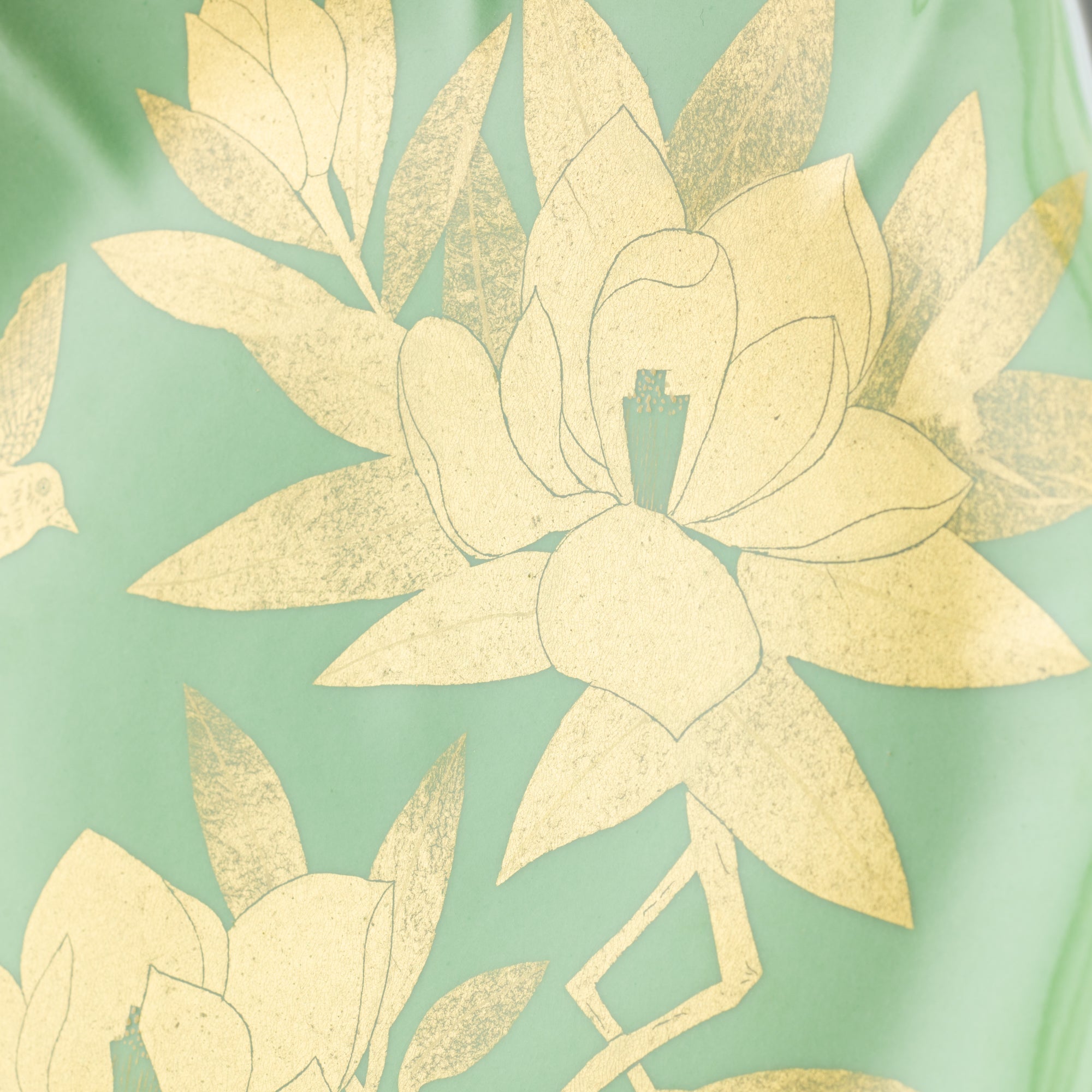

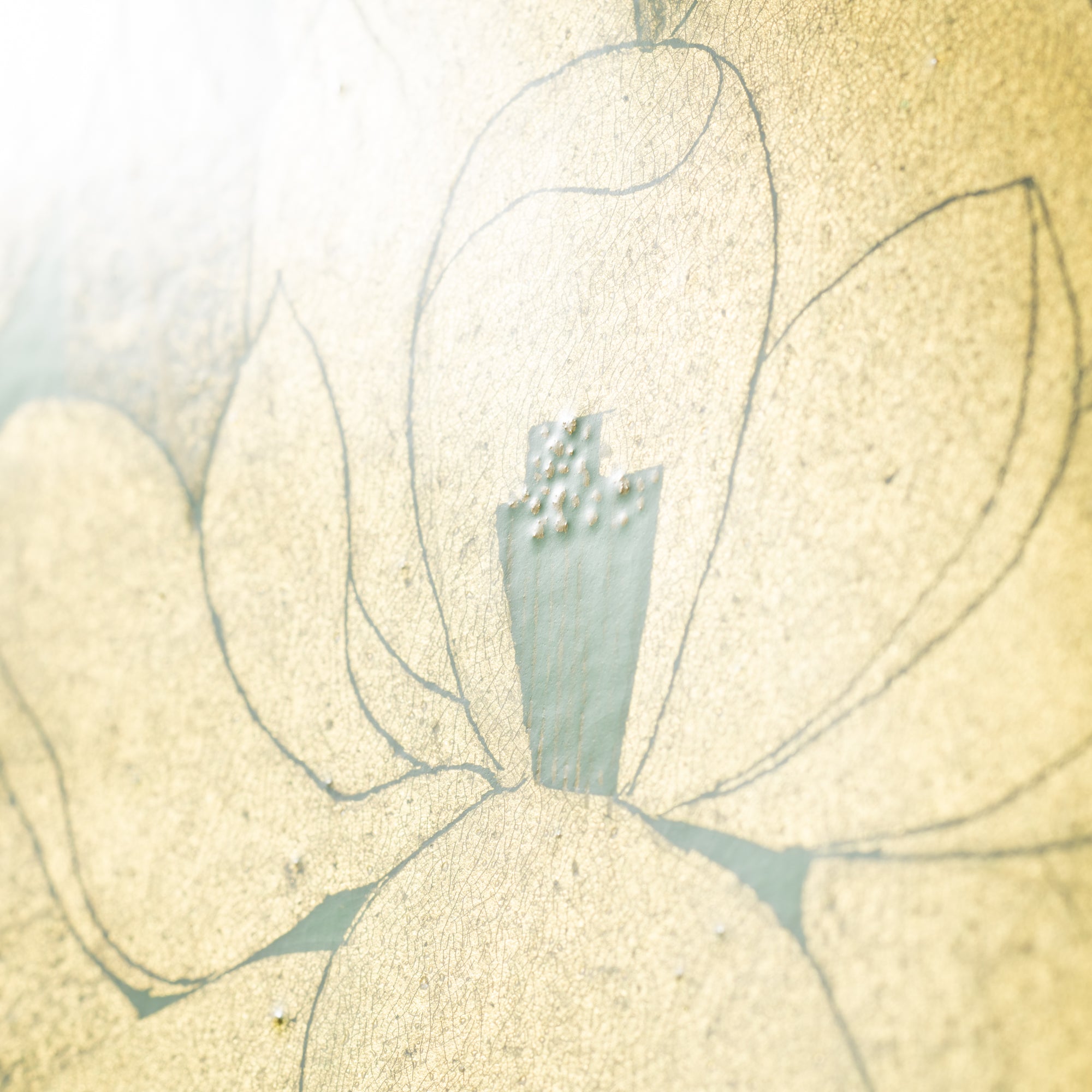
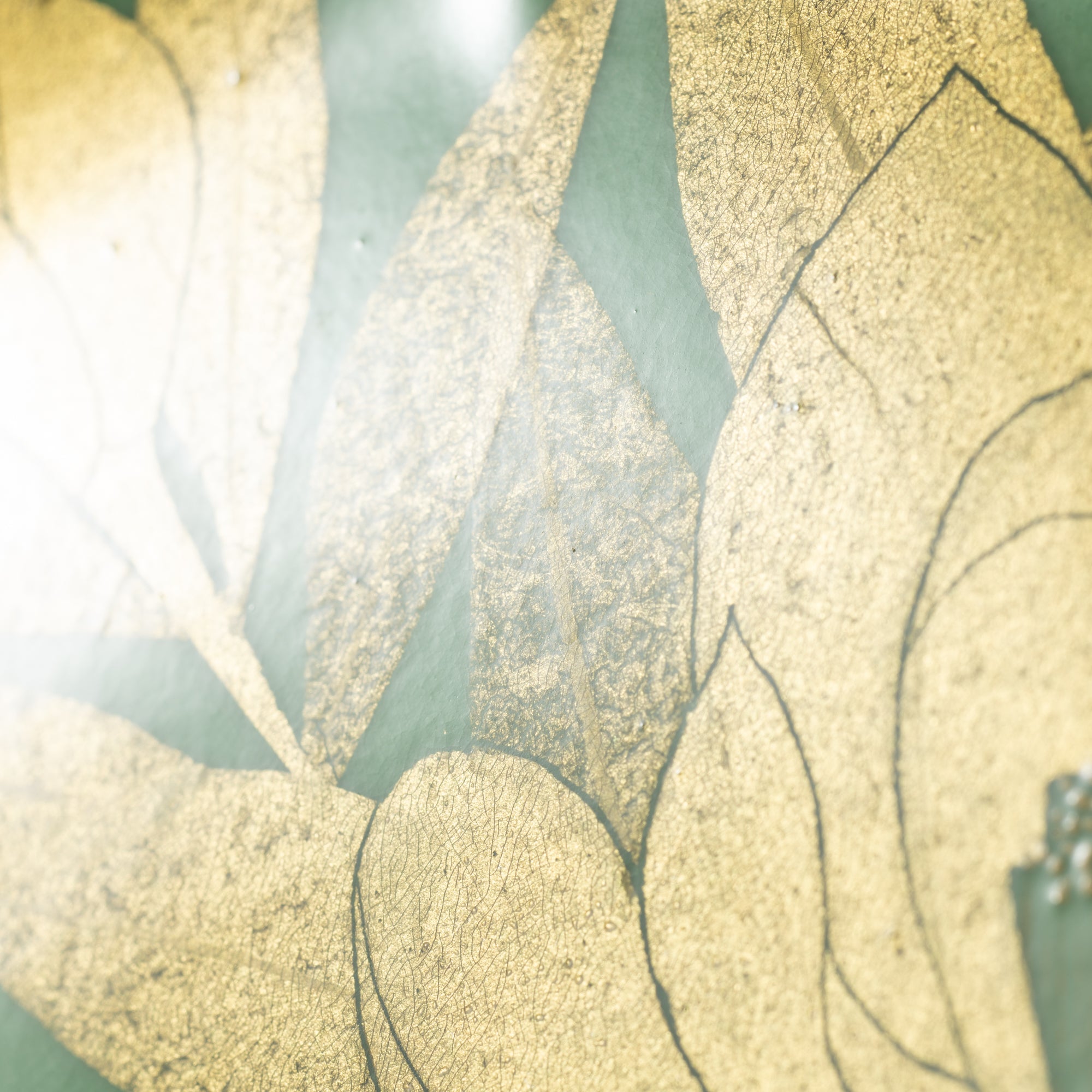
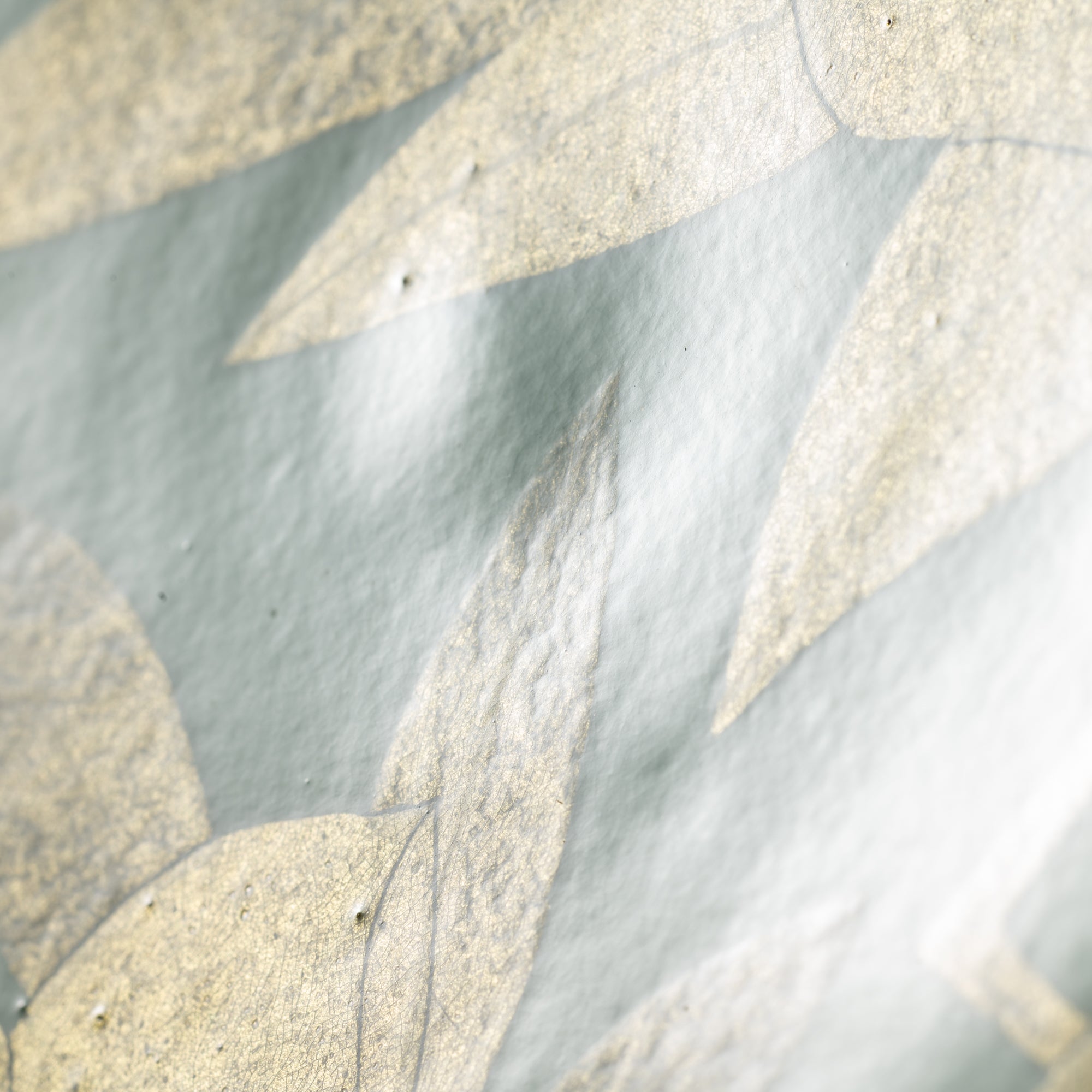
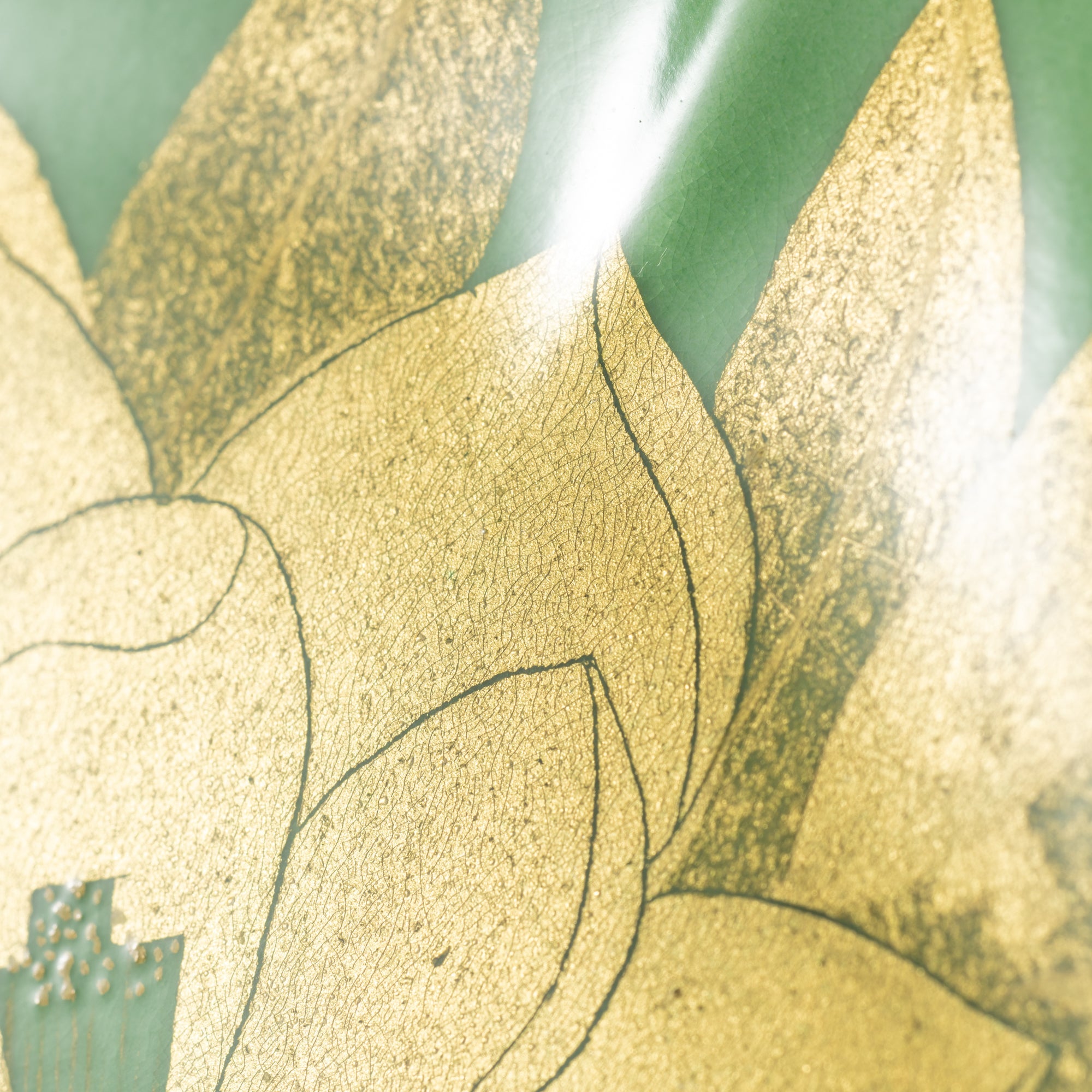
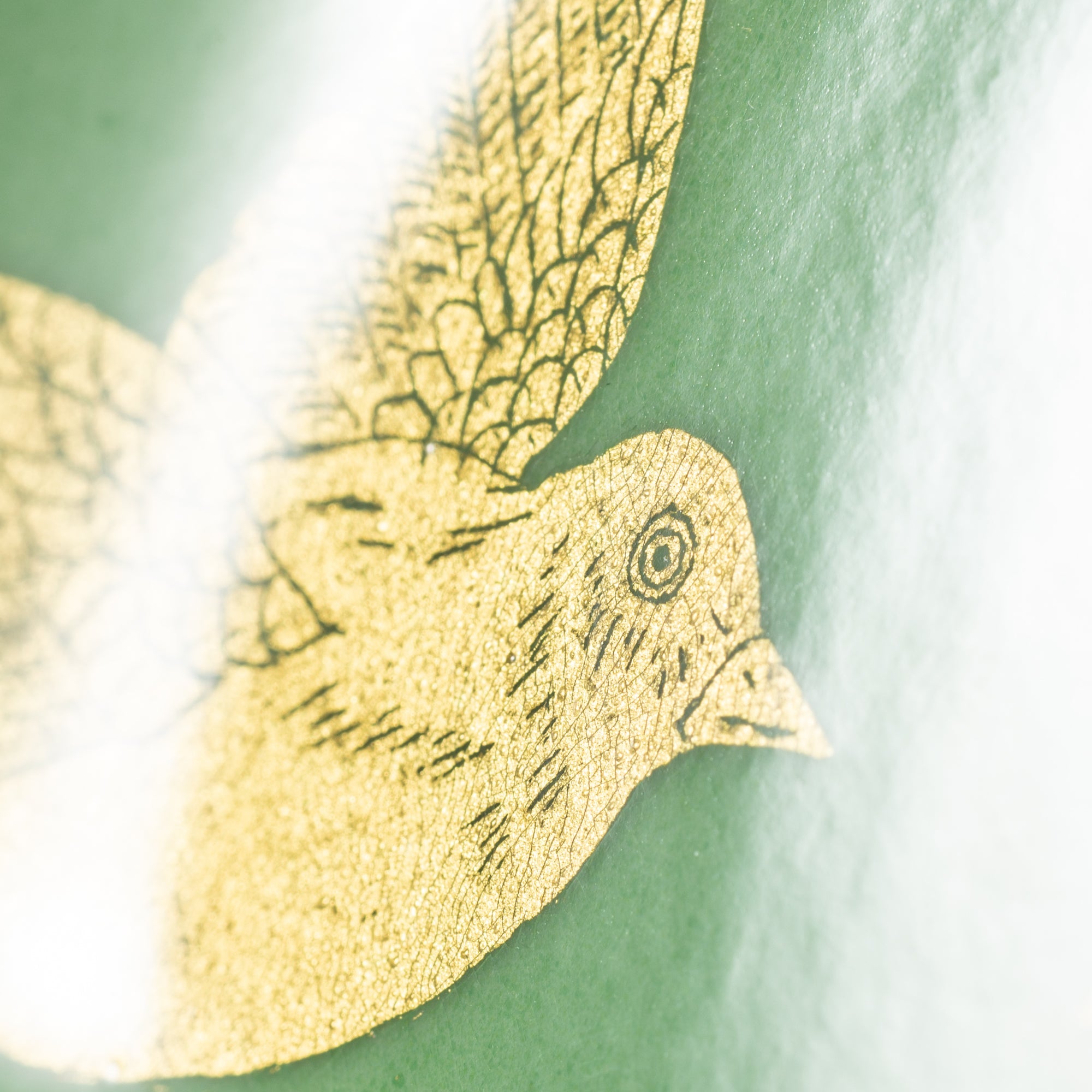

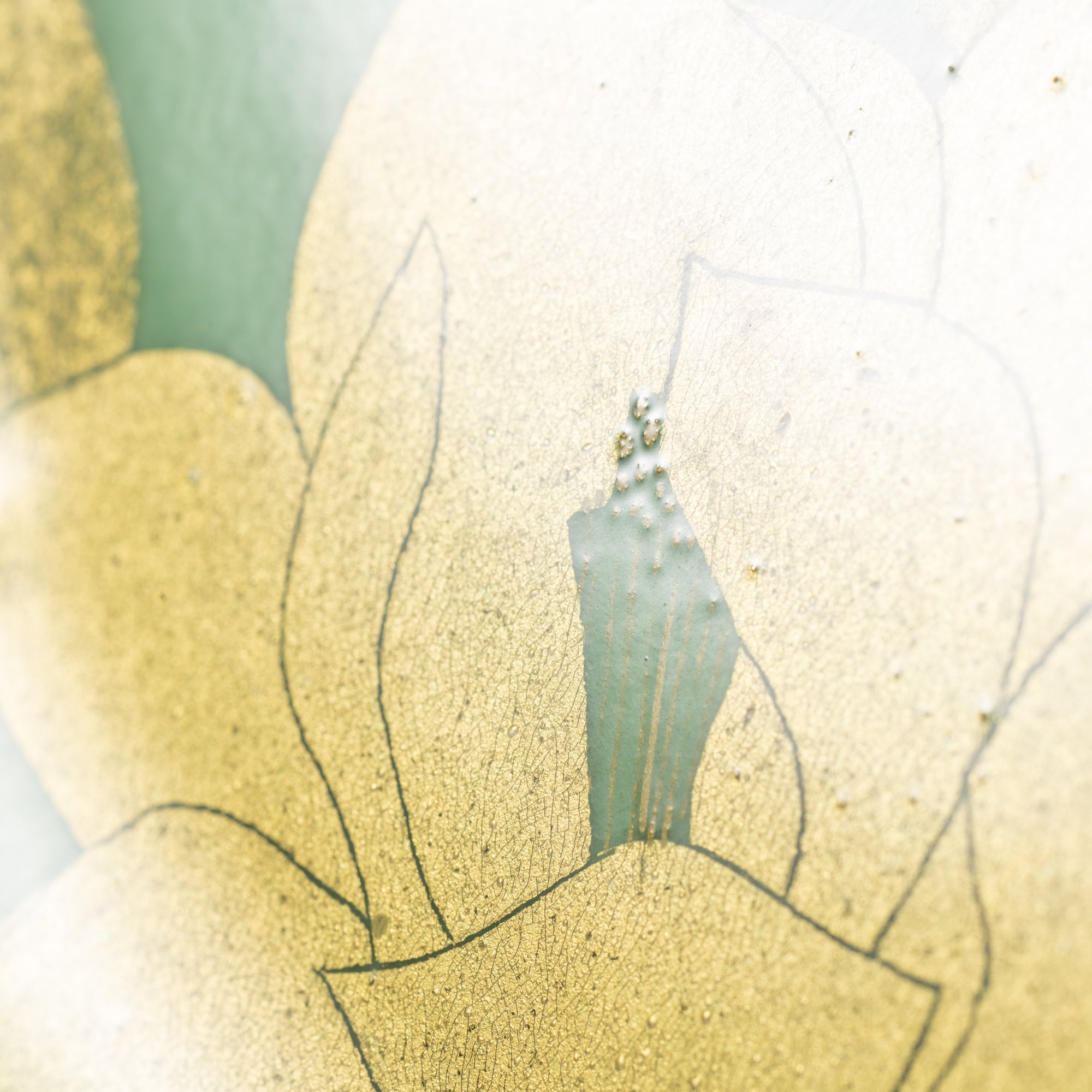
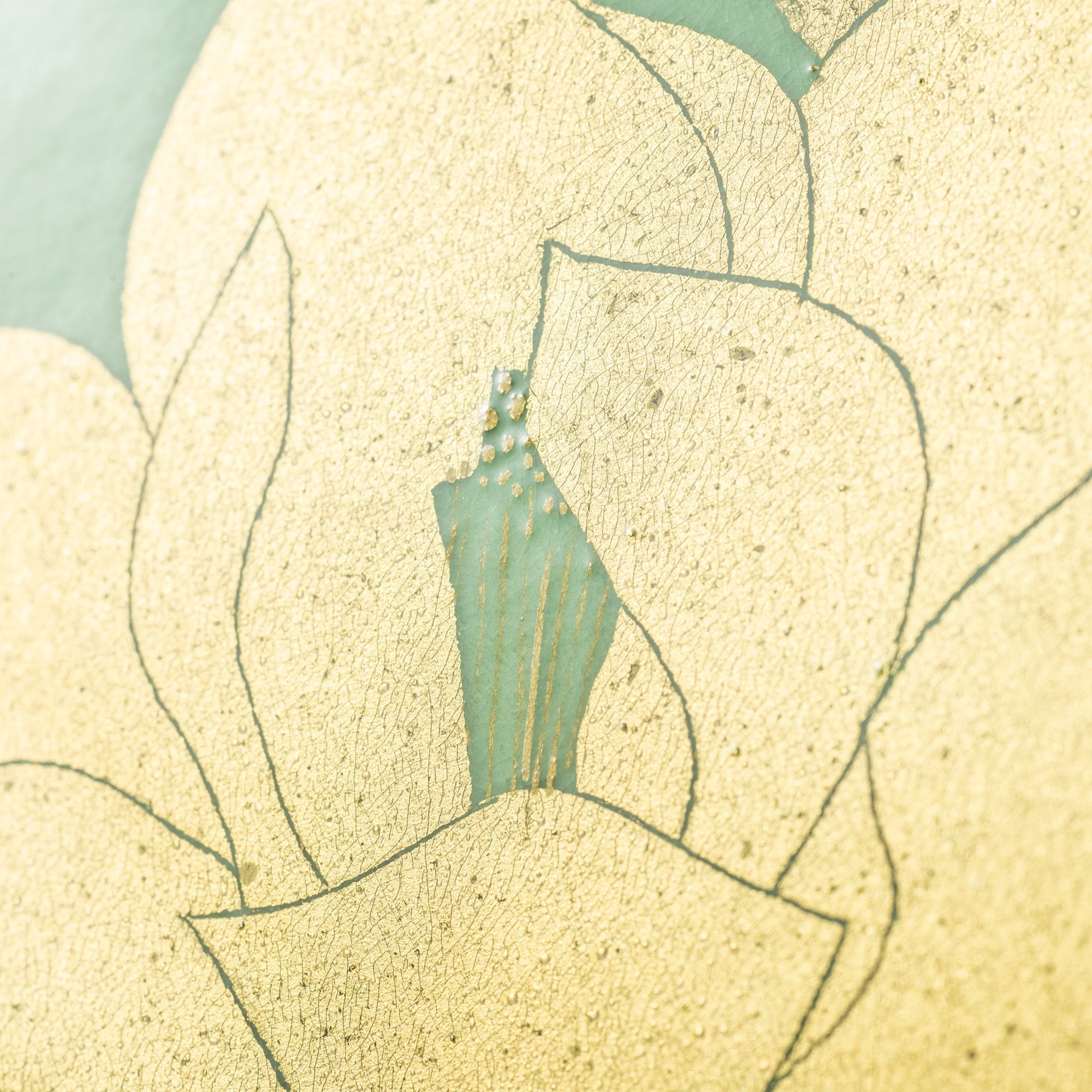
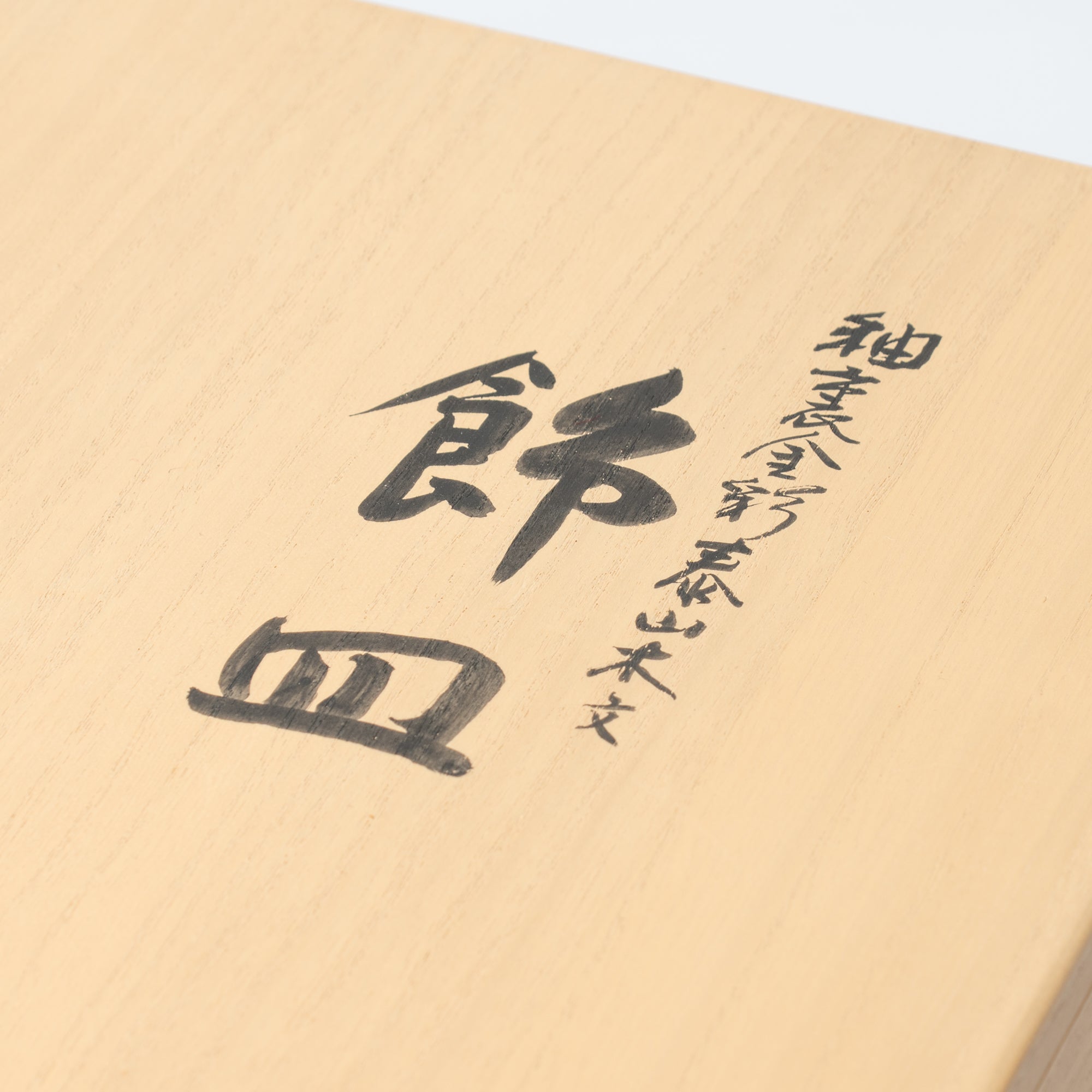
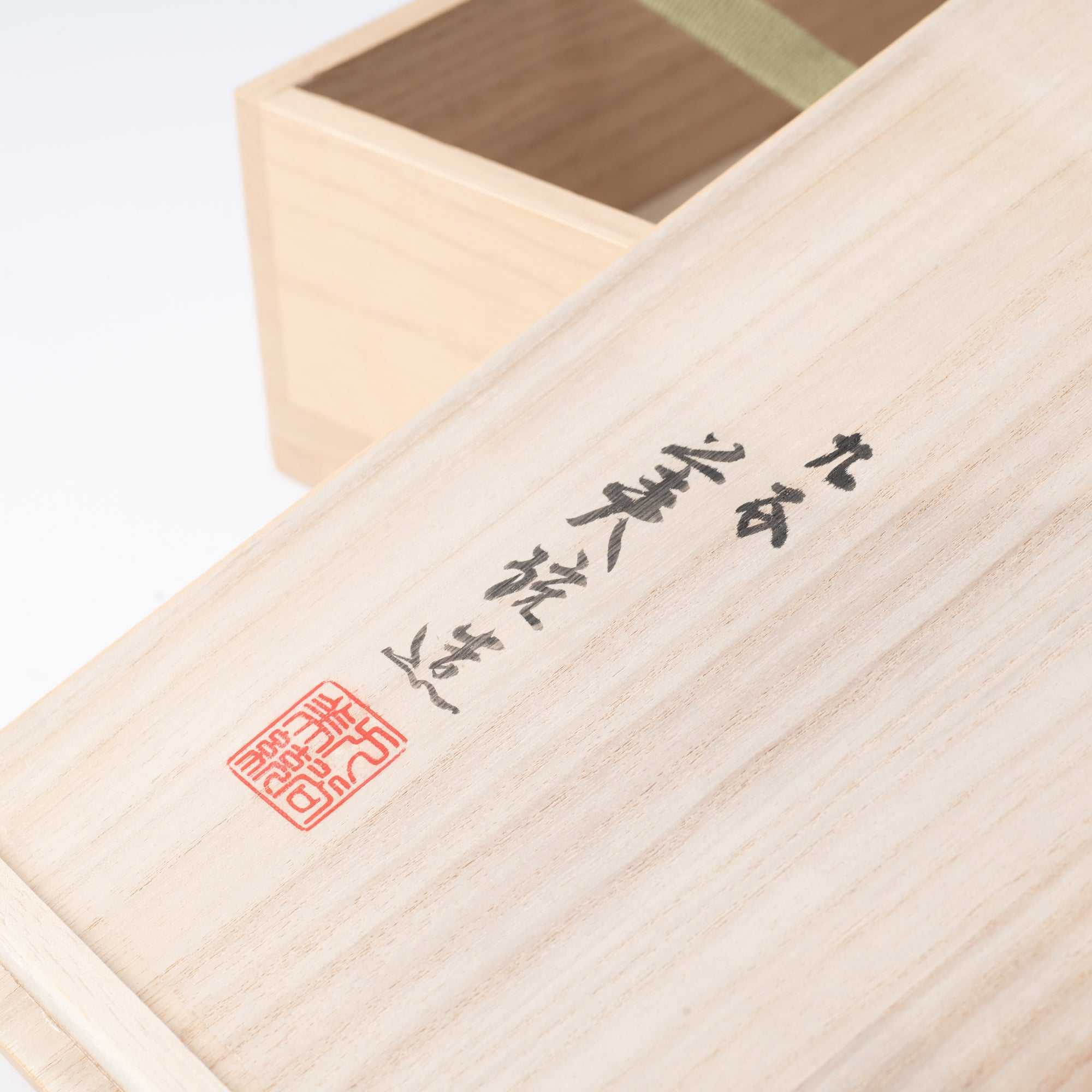
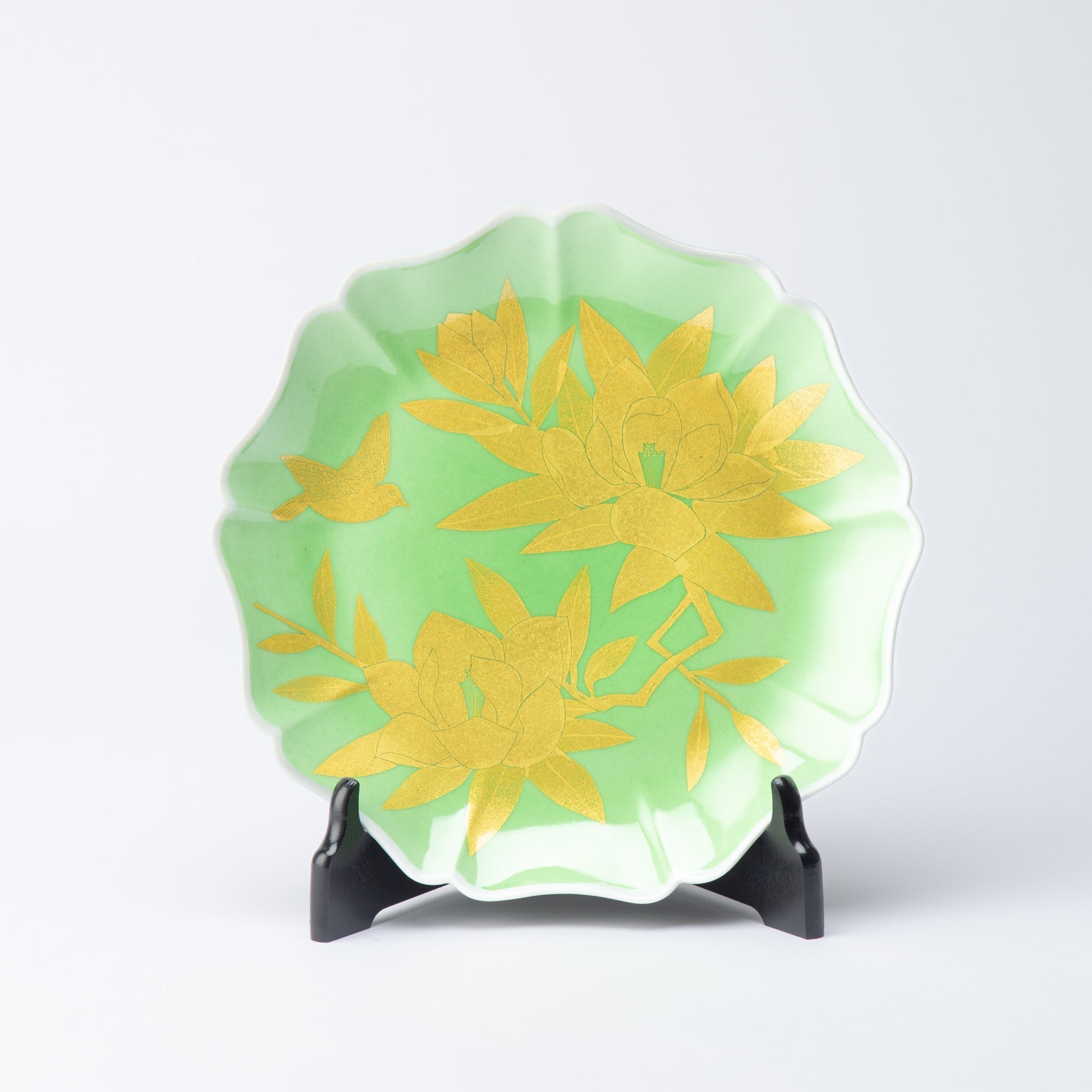
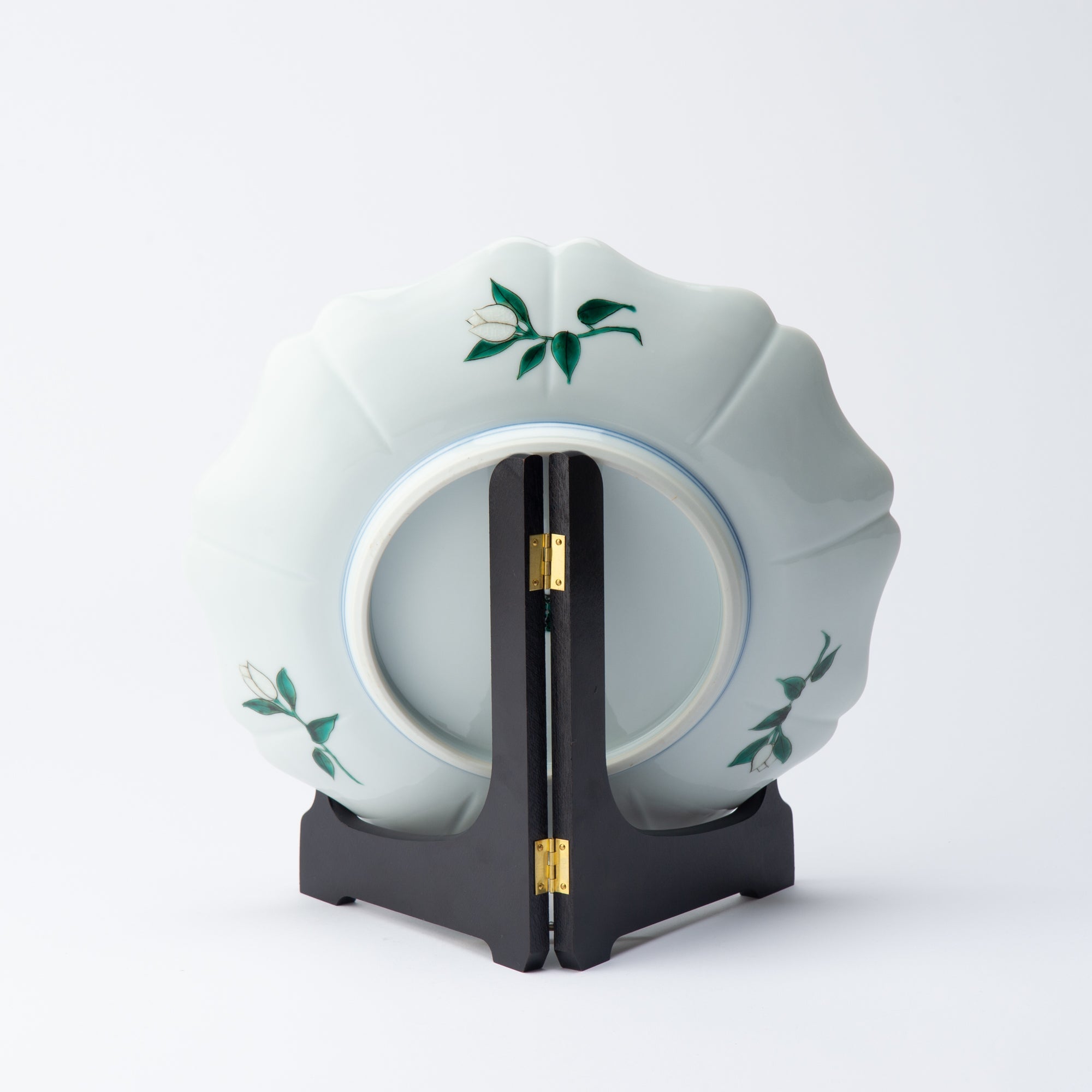

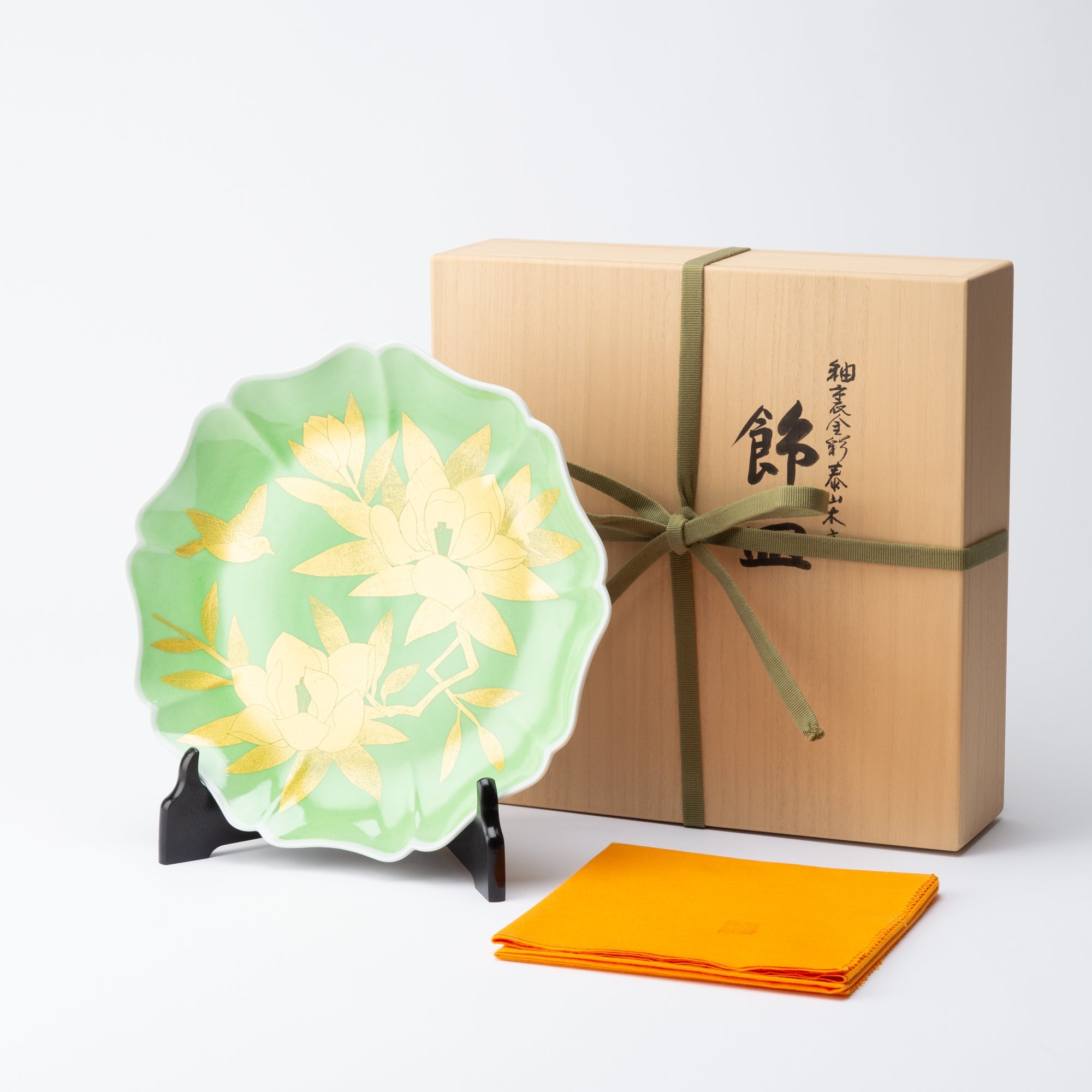
Magnolia and Bird Underglaze Gold Leaf Ornamental Plate
This Yoshida Minori Gold Leaf Ornamental Plate, adorned with underglaze gold leaf, showcases a magnolia motif. The base color features a pale yellow-green shade, reminiscent of the Ming Dynasty (1368 CE - 1644 CE), with a gold decoration. With grand flowers and delicate buds, alongside a finely detailed small bird at the top, the plate is symmetrically embellished, its feathers intricately layered with gold leaf.
The upper portion of the plate captures a scene of new life and growth, featuring delicate buds that seem on the verge of blossoming. Adding to the whimsical nature of the design is a small bird, intricately smaller than the flowers, positioned at the top. This bird is a masterpiece of craftsmanship, with its feathers created by layering gold foil and then finely etching details with a needle or blade, especially around the chest area, depicting the finesse of movement.
DETAIL
| Quantity | 1 |
| Size | L 36.0 cm (14.2 in) x W 36.0 cm (14.2 in) x H 12.0 cm (4.7 in) |
| Material | Porcelain |
| Package Type | Wooden box |
| Microwave | No |
| Dishwasher | No |
Origin
Choose options




























Collection
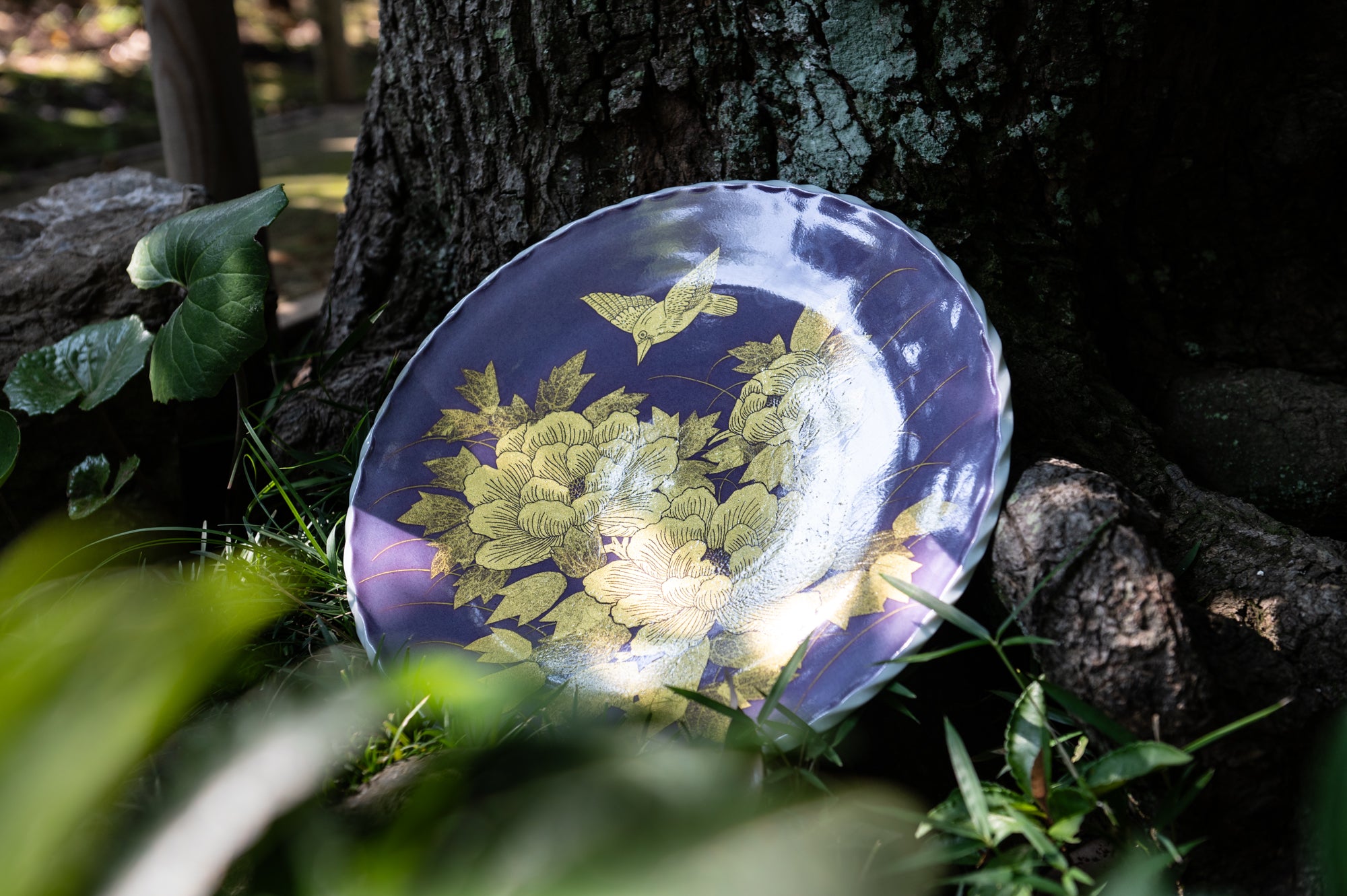
Interview
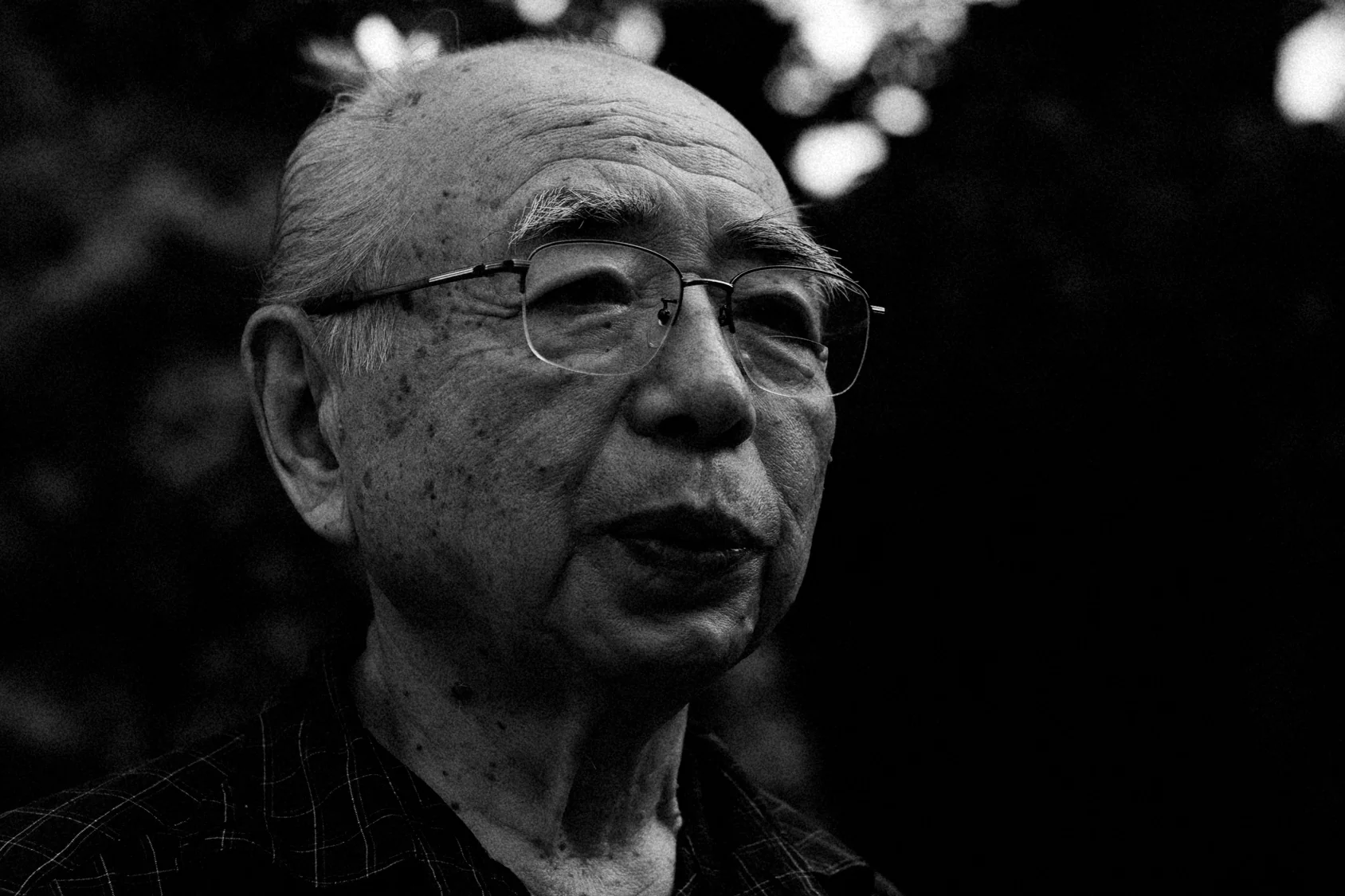
Concept
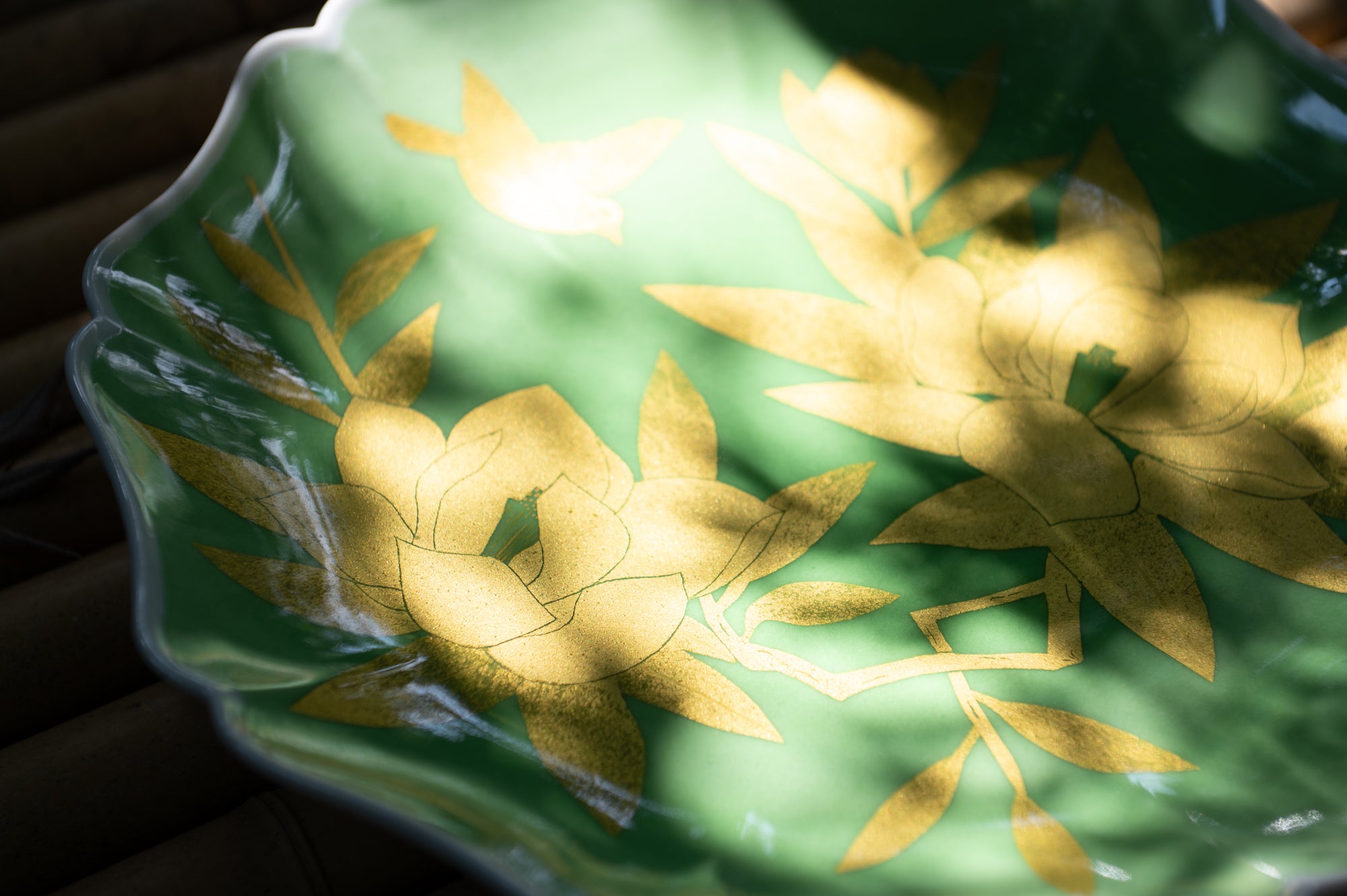
International Shipping
Multiple International Shipping Options
Discounted shipping for over 500000!
Free shipping for over 5000000!
Insured shipping service
Full compensation for any damage during transit.
Made by Japanese craftsmen
Fair Pricing, free Furoshiki wrapping!

